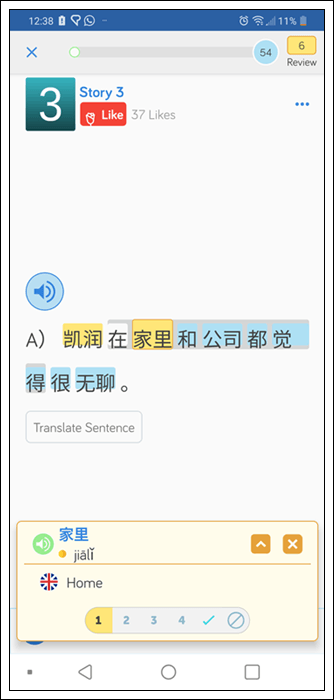5 Ways to Learn Chinese Characters Effectively
Trying to learn Chinese characters but feel lost?
In this post, I’ll go over 5 ways to help you learn Chinese characters effectively so you can interact with the language more.
But before I talk about that…let me quickly go over why Chinese characters are so dang hard!
Unlike the English alphabet, Chinese characters are made up of radicals (a graphical component of a Chinese character under which the character is traditionally listed in a Chinese dictionary, source). For beginners, Chinese characters can be very difficult to recognize since many of them look identical to one another. Plus, there are literally tens of thousands of them!
Ready to give up? DON’T.
The (somewhat) good news is 1000 Chinese characters is enough to be intermediate (where 1500-2000 is what most native speakers know). Also, if children can learn them in school…so can you!
Going back to my original topic, here’s 5 methods I recommend to help you learn Chinese characters.
Read, read, and read
This is the best way, in my opinion.
Of course, you’ll still need a small base of characters to start, which you can easily learn by going through LingQ’s mini stories. The stories contain the most common phrases and grammar. The best part about reading Chinese on LingQ is that you can instantly look up and save your new words, building your vocabulary faster than if you were to use a separate dictionary and look up a character.

The more you read and encounter the character in meaningful context, the easier it is to remember. Besides the mini stories, read things you’re interested in. Of course, you’re limited to what you can read in the early stages, but with a bit of Googling, something is sure to come up. I recommend children stories to start off and as you get more comfortable, you can begin to venture into the massive amount of content Chinese has to offer.
Another reason why learning characters in context is helpful is because sometimes the same Chinese character has a different meaning depending on the context. For instance, the character “走” could mean walk or leave. Reading a lot will help you to learn the versatility of Chinese characters.
Learning radicals
As I mentioned earlier, Chinese characters are made up of radicals.
For instance, the character “切“, means “cut” and is made up of two radicals. The first radical is “七” which is pronounced as “qī”, which is how you pronounce “切”. Whereas the second radical is a knife radical “刀”, which suggests the character’s meaning. Combine these and you’ll know both the meaning and the pronunciation of the word.
Learning radicals individually can be helpful for some but if you find it too tedious, then you can skip this method.
Spaced Repetition System
SRS, spaced repetition system, is a language learning method that allows you to input Chinese characters, words, or sentences in, let’s say an app, in order to periodically test yourself.
Unlike flashcards, SRS is automated by computer algorithms that tell you when you should review a certain card, which is dependent on how many times you get the answer correct. For example, you will see cards you get wrong more frequently than ones you get right.
Pro-tip, LingQ has built in SRS functionality that allows you to review words in an Anki-like fashion. Plus, you can also export all the words you’ve saved in LingQ to Anki!

Flashcards
Hand-made Flashcards are always helpful. Writing down Chinese characters is another solid way to help you a) remember them and b) distinguish the subtle differences between ones that look-a-like.
If you also want to learn how to write in Chinese, hand-made flashcards are the way to go!
Rinse and repeat
While this isn’t technically a different way to learn Chinese characters efficiently, it’s essential to practice every day. Whether that’s reading, creating flashcards, remembering radicals, and so on. Creating a habit out of your Chinese studies will help you pick up the language faster and prevent any stoppages.
Learn Chinese Faster Using LingQ
Immersing yourself in Chinese doesn’t require you to travel abroad or sign up for an expensive language program.
However, it can be a bit tiresome to find interesting content, go back and forth between sites, use different dictionaries to look up words, and so on.
Thank goodness for LingQ! Start today and find out how to learn Chinese online!
You can import videos, podcasts, and much more and turn them into interactive lessons.
Keep all your favourite Chinese content in one place, easily look up new words, save vocabulary, and review. Check out our guide to importing content into LingQ for more information.
LingQ is available on web as well as Android and iOS. Gain access to thousands of hours of audio and transcripts and begin your journey to fluency today.
Enjoyed this post? Check out polyglot and LingQ cofounder Steve Kaufmann’s blog post for some tips on how to learn Chinese!
***
Annie Law grew up in Hong Kong and is fluent in Cantonese and Mandarin. She’s a reporter from 9-5 and a foodie 24/7 who’s proud to call 604 home.


